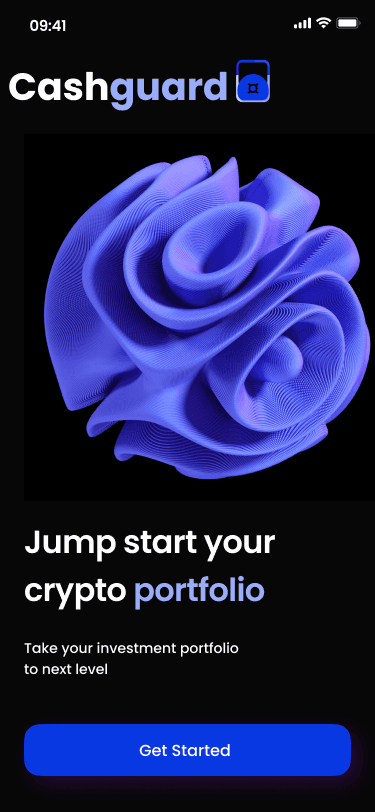


May 12, 2024
How to Create an Effective Design Portfolio
May 12, 2024
How to Create an Effective Design Portfolio
May 12, 2024
How to Create an Effective Design Portfolio
What is a portfolio?
A portfolio serves as a showcase of your best work, regardless of your industry—be it fashion, architecture, design, or any other field. It's a method to exhibit your work, whether you're looking for a new job or aiming to expand your audience or customer base.
Types of design portfolios
Depending on the type of design work you do, various formats for your portfolio will best suit your needs. A design portfolio can be digital, such as a website, slideshow, or PDF, or it can be analog, like a print book or poster.
Graphic design portfolio
In the realm of graphic design, creating a PDF portfolio has become increasingly popular. Using tools like InDesign and Photoshop, you can craft multi-page PDFs that showcase your work and PDF design skills effectively. With tools like Framer, it's even easier to create a PDF online and share it quickly. The result is a brochure or one-pager piece displaying examples of your best work along with project descriptions and related information.
UX design portfolio
For UX designers, online portfolios are typically the most popular choice today. This could be a simple one-page website with your contact information or a more comprehensive online gallery site. If web design is your main discipline, a portfolio website is ideal as it demonstrates your web design skills while showcasing your best work where it’s meant to be seen. Portfolio websites offer numerous benefits, especially in today's digital age. They can showcase design properties like animation and interactivity, important aspects of UX design, so viewers get the full experience of your designs. Additionally, they are easy to share via social media or direct links, making your work readily accessible. Furthermore, online portfolios allow you to express your personality more freely compared to traditional print portfolios.
However, there are some drawbacks to online portfolios. They often require knowledge of code to create, which can be a barrier for many UX designers. While tools like Framer offer options to create a design portfolio without code, there are still considerations like breakpoints, different browsers, and rendering issues to address. Additionally, website portfolios can be more time-consuming to create, depending on the number of pages required.
What is a portfolio?
A portfolio serves as a showcase of your best work, regardless of your industry—be it fashion, architecture, design, or any other field. It's a method to exhibit your work, whether you're looking for a new job or aiming to expand your audience or customer base.
Types of design portfolios
Depending on the type of design work you do, various formats for your portfolio will best suit your needs. A design portfolio can be digital, such as a website, slideshow, or PDF, or it can be analog, like a print book or poster.
Graphic design portfolio
In the realm of graphic design, creating a PDF portfolio has become increasingly popular. Using tools like InDesign and Photoshop, you can craft multi-page PDFs that showcase your work and PDF design skills effectively. With tools like Framer, it's even easier to create a PDF online and share it quickly. The result is a brochure or one-pager piece displaying examples of your best work along with project descriptions and related information.
UX design portfolio
For UX designers, online portfolios are typically the most popular choice today. This could be a simple one-page website with your contact information or a more comprehensive online gallery site. If web design is your main discipline, a portfolio website is ideal as it demonstrates your web design skills while showcasing your best work where it’s meant to be seen. Portfolio websites offer numerous benefits, especially in today's digital age. They can showcase design properties like animation and interactivity, important aspects of UX design, so viewers get the full experience of your designs. Additionally, they are easy to share via social media or direct links, making your work readily accessible. Furthermore, online portfolios allow you to express your personality more freely compared to traditional print portfolios.
However, there are some drawbacks to online portfolios. They often require knowledge of code to create, which can be a barrier for many UX designers. While tools like Framer offer options to create a design portfolio without code, there are still considerations like breakpoints, different browsers, and rendering issues to address. Additionally, website portfolios can be more time-consuming to create, depending on the number of pages required.
What is a portfolio?
A portfolio serves as a showcase of your best work, regardless of your industry—be it fashion, architecture, design, or any other field. It's a method to exhibit your work, whether you're looking for a new job or aiming to expand your audience or customer base.
Types of design portfolios
Depending on the type of design work you do, various formats for your portfolio will best suit your needs. A design portfolio can be digital, such as a website, slideshow, or PDF, or it can be analog, like a print book or poster.
Graphic design portfolio
In the realm of graphic design, creating a PDF portfolio has become increasingly popular. Using tools like InDesign and Photoshop, you can craft multi-page PDFs that showcase your work and PDF design skills effectively. With tools like Framer, it's even easier to create a PDF online and share it quickly. The result is a brochure or one-pager piece displaying examples of your best work along with project descriptions and related information.
UX design portfolio
For UX designers, online portfolios are typically the most popular choice today. This could be a simple one-page website with your contact information or a more comprehensive online gallery site. If web design is your main discipline, a portfolio website is ideal as it demonstrates your web design skills while showcasing your best work where it’s meant to be seen. Portfolio websites offer numerous benefits, especially in today's digital age. They can showcase design properties like animation and interactivity, important aspects of UX design, so viewers get the full experience of your designs. Additionally, they are easy to share via social media or direct links, making your work readily accessible. Furthermore, online portfolios allow you to express your personality more freely compared to traditional print portfolios.
However, there are some drawbacks to online portfolios. They often require knowledge of code to create, which can be a barrier for many UX designers. While tools like Framer offer options to create a design portfolio without code, there are still considerations like breakpoints, different browsers, and rendering issues to address. Additionally, website portfolios can be more time-consuming to create, depending on the number of pages required.




